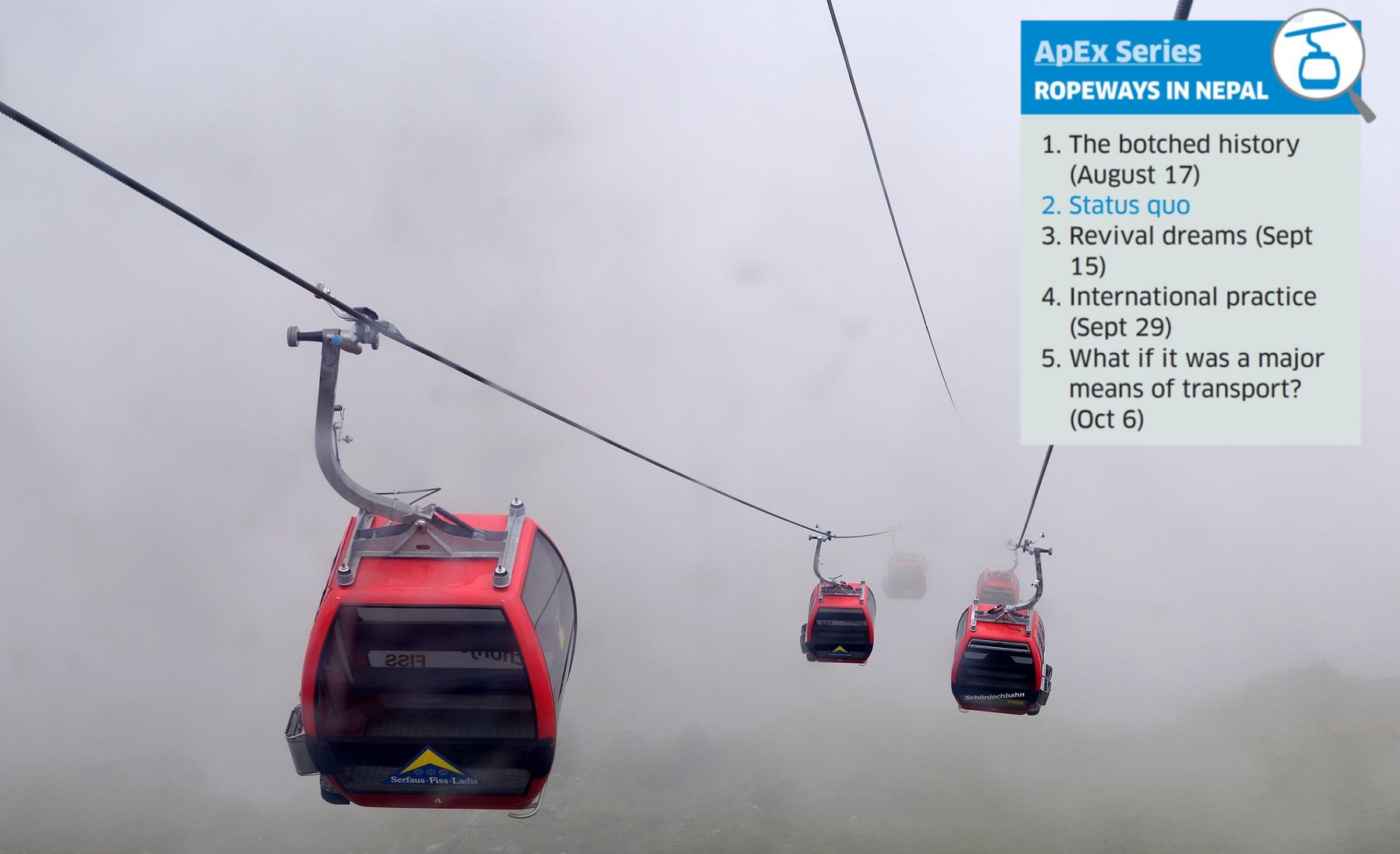Ropeways are an ideal means of human and goods transport in Nepal, a country filled with rugged mountains and hills. In fact, installing ropeways are six times cheaper than building roads. Yet there has been little interest in their development. Studies suggest Nepal could have up to 2,000 ropeways and feasibility studies have been completed on 62 of them. So what accounts for the paucity of ropeway carriages zipping over our hills and valleys?
The lengthy bureaucratic process is one problem. For instance, for an investor to build a ropeway, he or she has to get permits from 21 different government agencies. Cable cars—of the kind we see in Manakamana and Chandragiri—are also a kind of ropeway. The Manakamana cable car was first established in 1998. Quickly, the economy and job prospects of the surrounding areas were transformed. There could be no clearer case of a high social return on investment. Yet it would be another two decades before another cable car company came into operation. Surprisingly the government has taken no initiative to expand the reach of ropeways and cable cars. Private companies are doing all the heavy lifting.
This is a case of misplaced priorities. Politicians have forced people to see longer and wider roads as synonymous with development, despite the enormous environmental and financial costs incurred in the process. The cable car system could also be mighty useful in urban hubs. “Our politicians have been pitching for metro-rail and monorail to ease Kathmandu valley’s traffic congestion,” says Guna Raj Dhakal, chairperson of Ropeway Nepal Pvt Ltd. “But a cable car system could address the problem of urban mobility even better.” There is also ample scope, all around Nepal, for the ropeways that exclusively transport goods. Unlike the people-carrying cable cars, they don’t need that many permits to operate as well.
Read full story here.











